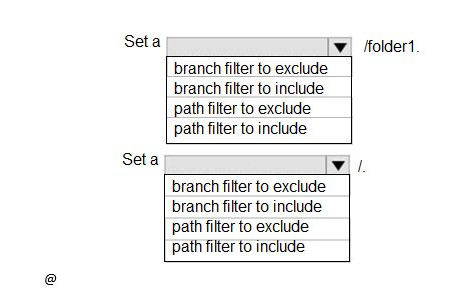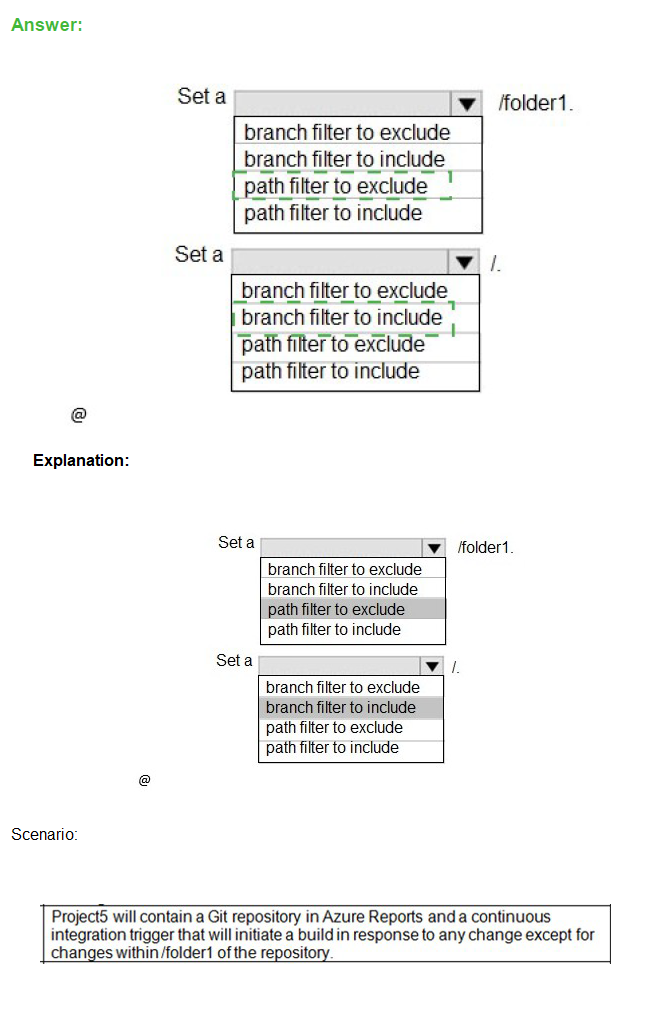
- Email support@dumps4free.com

Topic 1: Litware inc. Case Study: 1
Overview
Existing Environment
Litware, Inc. an independent software vendor (ISV) Litware has a main office and five
branch offices.
Application Architecture
The company’ s primary application is a single monolithic retirement fund management
system based on ASP.NE T web forms that use logic written in V8.NET. Some new
sections of the application are written in C#.
Variations of the application are created for individual customers. Currently, there are more
than 80 have code branches in the application’s code base.
The application was developed by using Microsoft Visual Studio. Source code is stored in
Team Foundation Server (TFS) in the main office. The branch offices access of the source
code by using TFS proxy servers.
Architectural Issues
Litware focuses on writing new code for customers. No resources are provided to refactor
or remove existing code. Changes to the code base take a long time, AS dependencies are
not obvious to individual developers.
Merge operations of the code often take months and involve many developers. Code
merging frequently introduces bugs that are difficult to locate and resolve.
Customers report that ownership costs of the retirement fund management system
increase continually. The need to merge unrelated code makes even minor code changes
expensive.
Requirements
Planned Changes
Litware plans to develop a new suite of applications for investment planning. The
investment planning Applications will require only minor integration with the easting
retirement fund management system.
The investment planning applications suite will include one multi-tier web application and
two iOS mobile applications. One mobile application will be used by employees; the other
will be used by customers.
Litware plans to move to a more agile development methodology. Shared code will be
extracted into a series of package.
Litware has started an internal cloud transformation process and plans to use cloud based
services whenever suitable.
Litware wants to become proactive m detecting failures, rather than always waning for
customer bug reports.
Technical Requirements
The company's investment planning applications suite must meet the following technical
requirements:
• New incoming connections through the firewall must be minimized.
• Members of a group named Developers must be able to install packages.
• The principle of least privilege must be used for all permission assignments
• A branching strategy that supports developing new functionality in isolation must be used.
• Members of a group named Team leaders must be able to create new packages and edit the permissions of package feeds
• Visual Studio App Center must be used to centralize the reporting of mobile application
crashes and device types in use.
• By default, all App Center must be used to centralize the reporting of mobile application
crashes and device types in use.
• Code quality and release quality are critical. During release, deployments must not
proceed between stages if any active bugs are logged against the release.
• The mobile applications must be able to call the share pricing service of the existing
retirement fund management system. Until the system is upgraded, the service will only
support basic authentication over HUPS.
• The required operating system configuration tor the test servers changes weekly. Azure
Automation State Configuration must be used to ensure that the operating system on each
test servers configured the same way when the servers are created and checked
periodically.
Current Technical
The test servers are configured correctly when first deployed, but they experience
configuration drift over time. Azure Automation State Configuration fails to correct the
configurations.
Azure Automation State Configuration nodes are registered by using the following
command.

What should you use to implement the code quality restriction on the release pipeline for the investment planning applications suite?
A. a trigger
B. a pre deployment approval
C. a post-deployment approval
D. a deployment gate
Note: This question is part of a series of questions that present the same scenario. Each
question in the series contains a unique solution that might meet the stated goals. Some
question sets might have more than one correct solution, while others might not have a
correct solution.
After you answer a question in this section, you will NOT be able to return to it. As a result,
these questions will not appear in the review screen.
You plan to create a release pipeline that will deploy Azure resources by using Azure
Resource Manager templates. The release pipeline will create the following resources:
A. Yes
B. No
Use two linked templates, instead of the nested template.
How should you configure the filters for the Project5 trigger? To answer, select the appropriate option in the answer area.
NOTE: Each correct selection is worth one point.


You have an existing build pipeline in Azure Pipelines. You need to use incremental builds without purging the environment between pipeline executions. What should you use?
A. a File Transform task
B. a self-hosted agent
C. Microsoft-hosted parallel jobs
When you run a pipeline on a self-hosted agent, by default, none of the subdirectories are cleaned in between two consecutive runs. As a result, you can do incremental builds and deployments, provided that tasks are implemented to make use of that. You can override this behavior using the workspace setting on the job.
You have an Azure subscription that contains a Log Analytics workspace named WS1 and a virtual machine named VM1. You need to install the Microsoft Enterprise Cloud Monitoring extension on VM1. Which two values are required to configure the extension? Each correct answer presents part of the solution. NOTE: Each correct answer is worth one point.
A. the secret key of WS1
B. the ID of the subscription
C. the system-assigned managed identity of VM1
D. thelDofWS1
E. the resource ID of VM1
| Page 13 out of 98 Pages |
| Previous |